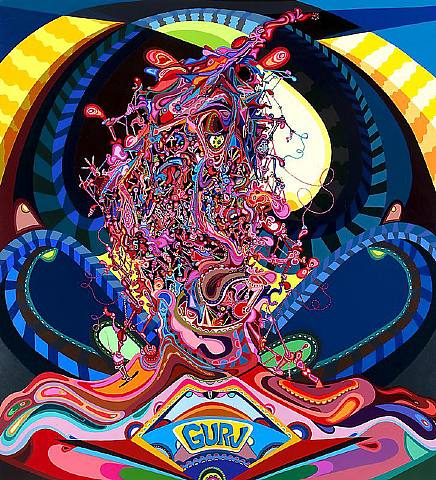
By Rich Guerra
The contemporary art market is facing a sinking feeling that Wall Street knows well. Over the last five years, the art world has experienced a flood of fiscal ecstasy. Art values grew on average almost 20 percent per year, according to the Mei Moses fine art index, comprised in part by Michael Moses, a professor of management at
I have come to find that the traditional effect of national, and in this case global, economic despair is a swift crippling of the contemporary art market. During past recessions, a failing economy cleared out gallery spaces and left gallery walls empty, but it ultimately opened new space for those new artists who surfaced to reshape the way the art world lives and breathes. Artists, like economists, must take it into wider reaches of culture to find a new way up. Granted, the current economic crisis seems to be unlike anything our economy has seen since the first half of the 20th century, but my hopes are that history will repeat it self for the sake of the art.
“In a turbulent world, art continues to represent both value and relevance,” said
Bill Ruprecht, President and CEO of Sotheby’s Auction House, reports MSNBC.com.
As I walked down
“It’s a time for galleries to take calculated risks and be very clever on what work you show,” said Claire Oliver, founder of The Claire Oliver Gallery in the Chelsea arts district of New York City, “We show artists who are in their 20’s and 30’s, whose art is still affordable, and our sales are still doing really well. Our collectors are still buying art because they love art and are jonesing for it.”
Auction houses, who auction off famous artwork and generally make the big sales, watched those sales evaporate over the last quarter of 2008-often settling at half of the projected selling point. In
“It has to do with perceived value; suddenly no one wants to buy work with a set value,” said Dan Zvereff, an artist working out of Brooklyn, “It is a push and pull kind of thing.”
Once an artist’s work has a price on it, depreciation is not usually viable option. It
remains an unspoken rule among well-known artists that you shouldn’t sell for less than your set value, even if that value is as bloated as the market itself. The successful artist is then put in a corner, where they have trouble selling without lowering their prices. It is during periods like this in the art world that the young and undiscovered artist must strike the market like their low-brow lifestyle depended on it.
“This is a time that separates the men from the boys,” said Oliver, “Young artists who are working hard and aggressively can make it, but if you have an ‘I’ll see how it goes’ attitude right now, you won’t.”
I’ve come to believe that during economic downtimes, art collectors turn their attention and their pocketbooks toward new artists whose value and notoriety they can raise by helping them break out. Collectors thrive on what appeals to a younger generation, finding fresh blood who use unique mediums and whose work is shaped around a single relatable idea. In
“The artwork I am drawn most to at First Friday, and who draw the biggest
crowd are the young artists,” said Nick Zegel, an artist working out of the
Aged economics failed the financial sector, so the world is looking to those with fresh ideas to pull us through. As it has done in the past, the contemporary art market will find its revival in artists who are innovative and new.
“The market is experiencing a necessary shift,” said Oliver, “and the cream will rise to the top.”


